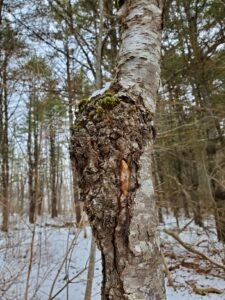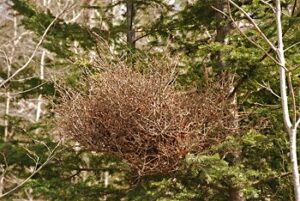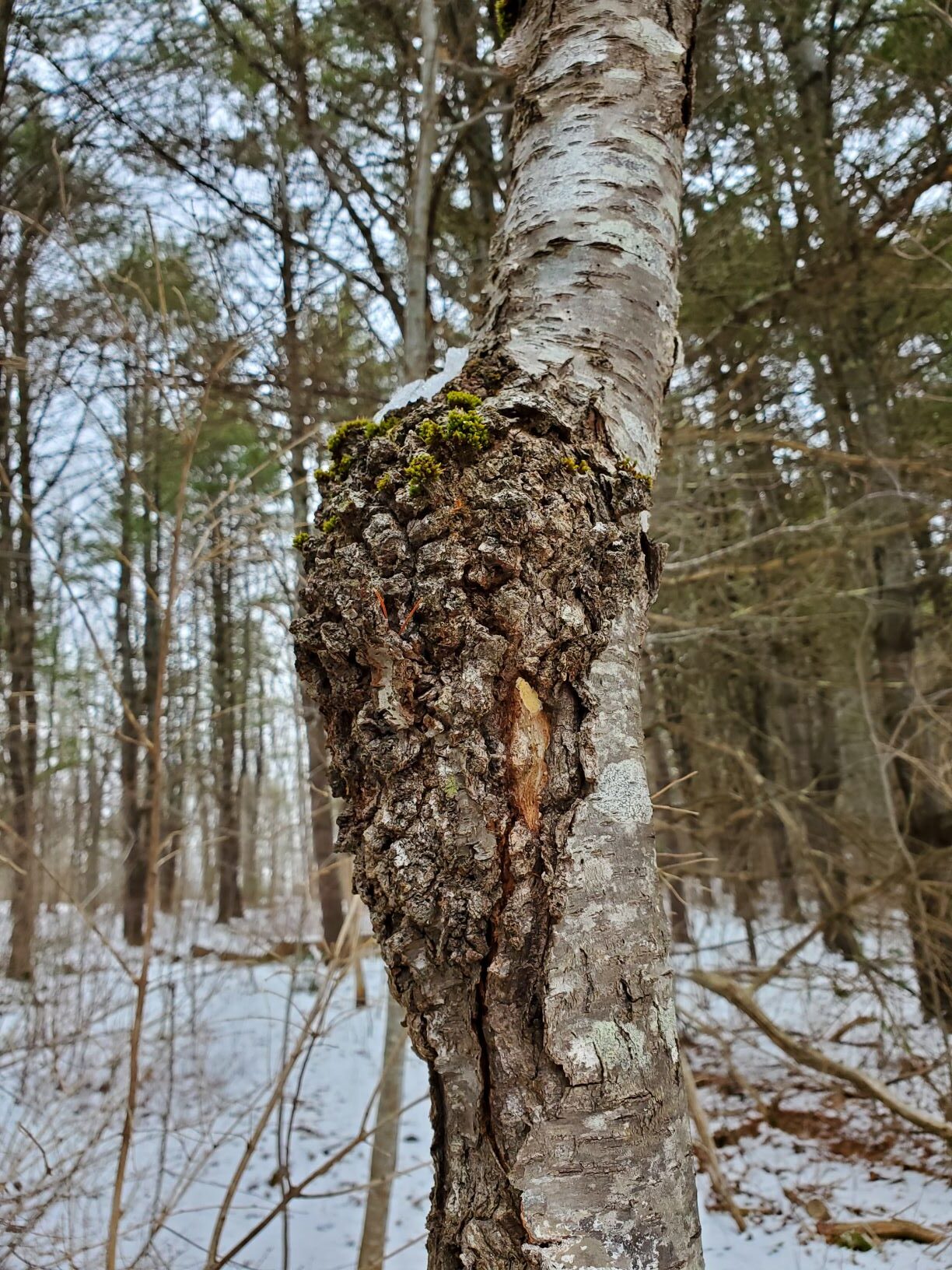
A Burl on a Tree Trunk
February 9: Tree Mysteries
Every once and a while, a tree will stand out among the others. Something about its shape, color, or pattern will emerge and catch my eye. A giant lump protruding from a tree trunk, a thick cluster of branches, some curious etchings under some bark. These tree mysteries can be found throughout the forest and all have a story to tell. I thought I would share some common conundrums you might find while in the woods.
One such mystery is a burl. A burl often appears as a large rounded bump on a tree’s trunk or branches. This growth results from a tree undergoing some form of stress, such as an injury, virus or fungus. The burl has a barked exterior and its interior is composed of a tree’s bud tissue that has not sprouted foliage or grown into a twig. As a burl grows, it absorbs the tree’s undeveloped buds that surround it and folds them into its enlarging form.
Burl cells are different from regular tree cells, often growing faster and during all seasons, which causes their unpredictable size and presentation. Despite its appearance however, a burl itself is not diseased or contagious. In fact, it is important to leave burls on living trees as they are act as a bandage and seal off the injured area. Burls from dead trees are highly prized for their beauty and rarity and are used by furniture makers, artists, and wood sculptors.

Witches Broom in a Tree
Another tree mystery is known as witches broom. Witches broom appears as a dense growth of shoots from a single point, resembling a birds nest or a broom. This is another case of a tree undergoing some form of stress, such as an injury, virus, or fungus. The normal order of growth is interrupted, causing buds to grow wildly. The witches broom growth will last for many years, usually for the life of the tree and can provide nesting habitat for birds and mammals, such as the northern flying squirrel.

Wood Boring Insect Paths
The final mystery I would like to share is most often seen under the bark of dead trees, or those on their way to being so. What appears like small carvings in intricate patterns are actually the feeding paths of borer insects. These beetles and moths spend part of their life tunneling beneath the bark, consuming a trail as they move. Borer insects can damage trees, but they usually arrive after the tree is already stressed, injured, or dying.
These are just a few of the common tree mysteries one might encounter on a walk in the woods. Next time you are in the forest, be sure to keep an eye out. If you find a mystery of your own, we welcome you to take a picture and share it with us. Who knows, it might be what I write about in the next blog post.




